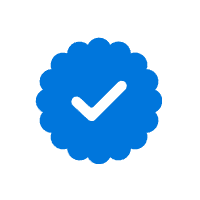What To Do If Your Information Is On The Dark Web?

Photo by Markus Spiske
If your data is on the dark web, you’re not alone, and there are steps you can take to stay safe.
Estimates suggest the dark web contains as much as 75,000 terabytes of data spread across billions of web pages. Most alarming of all, the majority of sites on the dark web contain illicit material, including stolen data, according to one analysis.
Bottom line: There’s a massive amount of information floating around the dark web that has been stolen…from people just like you.
It may not be unusual, but it is certainly concerning. Any time you’re the target of a cyber attack it is cause for alarm. It’s much worse, however, when one of those attacks succeeds at stealing your personal information, and the situation becomes especially alarming when your data gets posted to the dark web.
The consequences could be significant and repeated. That’s the bad news. The good news is that there are steps you can take to keep yourself safe if your data ends up on the dark web.
This article covers everything you need to know.
What is the Dark Web?
That’s a very common question. To understand the dark web, it helps to contrast it against what we think of as the “traditional” internet. The websites you visit regularly and find through search engines and links have all been indexed. That’s why you can discover them.
The websites on the dark web haven’t been indexed – each one operates like an independent island. The only way to reach them is through special browsers and by knowing the exact address of the site you want to visit. That’s why the websites on the dark web are often called “hidden” or “secret.”
Not everything that happens in secret is illegal or illicit – but much of what happens on the dark web consists of things that aren’t permitted on the traditional internet.
Selling stolen data is a prime example.
If hackers tried to sell stolen data on a website that anyone could easily find, that website would quickly be shut down and the hacker would call attention to their illegal activities. It’s high-risk and low reward.
The dark web flips that equation: There is far less risk of being caught or prosecuted and many more opportunities to connect with unscrupulous people.
It’s important to distinguish the dark web from the deep web. The deep web houses things like archived emails, research databases, or private online libraries that also aren’t indexed. Unlike the dark web, however, these materials are not being hidden, they just don’t merit much attention. The dark web is a part of the deep web and a relatively small part of the whole, but it’s where the worst things happening online tend to consolidate.
How to Find Out if Your Data is on the Dark Web?
Unfortunately, the first sign that your data is on the dark web is, too often, also the first indication that you’re the victim of identity theft. To put it another way: you don’t know the problem exists until the damage already starts.
Making matters worse, even if you felt inclined to go searching for your data on the dark web, it’s highly unlikely you would find it – truly a needle in a haystack.
It may be impossible to find your own data on the dark web, but many identity theft protection providers such as Aura have developed the experience and tools to make it possible. Their services may include dark web monitoring that will search far and wide for your data and send you notifications if and when anything is discovered.
These services are the most practical way to find out if your data is on the dark web. Identity theft protection that monitors the dark web is also the best way to keep stolen data from disrupting your life because it gives you an early warning. Why is that so important? So you can shut down the damage before it gets bad.
How Did My Information Get on the Dark Web?

Image by Freepik
Consider a few eye-opening statistics:
- 30,000 websites get hacked daily
- 22 billion records were breached in 2021
- 64 percent of companies have faced a cyber attack
Cyber attacks are more common, more sophisticated, and more successful than ever before. Every company, website, and digital resource can expect to be attacked at some point, and the odds of withstanding every incident are extremely low. Now that so much of our personal information, from medical records to financial information, exists in digital databases, hackers can acquire large amounts of sensitive data from just one successful attack.
The problem is that data, in and of itself, does not have much value. Unlike stealing cash or gold, it takes elaborate, ongoing schemes to turn Social Security numbers or email login information into actual money in the hacker’s pocket.
Most hackers don’t have the time and resources for that, and the dark web gives them a shortcut to turn data into dollars.
Research suggests that over 75 percent of the websites on the dark web are marketplaces. Some sell drugs, weapons, or other contraband – but stolen data is by far the most trafficked commodity on the dark web. Hackers will sell the data, either as individual or bulk records, to buyers who are willing and able to weaponize it in countless ways.
What Happens to My Information on the Dark Web?
It depends on what data was stolen.
Information like your Social Security numbers or contact information is valuable, sensitive, and dangerous in the wrong hands – but for the reasons outlined above, it’s hard to turn it into criminal profits. This data may fetch a low price – as low as $1 per Social Security number – and find few buyers. Again, the risk of having this data posted on the dark web is far from low, but it’s lower than having your banking or credit card information put up for sale.
Someone who buys your information off the dark web could use it to steal your identity and wreak havoc. From transferring money out of your accounts to setting up lines of credit in your name, personal information stolen from the dark web makes it possible to convincingly impersonate you and breeze through common identity and safety checks.
With some time, creativity, and the right data (which is all for sale on the dark web), there’s really no limit to the damage criminals could cause with identity theft.
Why Was I Targeted?
You probably were not targeted in any way.
Your data was stolen at random as part of a cyber attack carried out against whatever target seemed to be most vulnerable or most valuable. If your data was purchased off the dark web, you probably were not targeted either – it was about the data and not the person behind it.
All that being said, once your data is posted on the dark web, there’s almost no way to know if it’s been sold, to whom, or for what purpose.
And, once the data has been sold to someone, you are absolutely a target. To make matters even worse…the buyer potentially has everything they need to steal your identity.
That’s why anyone who finds their data on the dark web should consider themselves to be at heightened risk and proceed as if something dangerous will happen.
Can I Get My Information Removed From the Dark Web?
The dark web exists to avoid visibility and control. Each website operates according to its own preferences and policies, often with the express purpose of doing illegal activities like buying and selling stolen data.
As a result, there’s no easy, direct, or reliable way to have data removed from the dark web. Alerting the authorities makes them aware of the situation, but they rarely have the resources to police the many shadowy corners of the dark web. And, even when a site is shut down or an operator is arrested, another quickly appears, often with some or all the same stolen data as before.
The frustrating fact is this: If your data ends up on the dark web, it’s there for life.
✎ Related: How Do I Remove My Personal Information From The Internet? ➔
How Do I Protect Myself?

Photo by Glenn Carstens-Peters
Since there’s no way to predict or control what happens to your data on the dark web, it’s important to be proactive about protecting yourself from identity theft and all its consequences. Every situation is a little different, but here are the protective measures that everyone should consider:
✎ Related: What is Shoulder Surfing & How to Prevent It? ➔
How Do I Prevent This From Happening Again?
The steps you take to prevent stolen data from being used against you are also the best ways to prevent more of your data from ending up on the dark web.
Scanning for threats, protecting your accounts, and being vigilant make it much harder for even the most determined and advanced hackers to steal your data. As the saying goes, an ounce of prevention is worth a pound of cure.
Likewise, enlisting identity theft protection before your identity gets stolen is the best way to keep it from ever happening.


